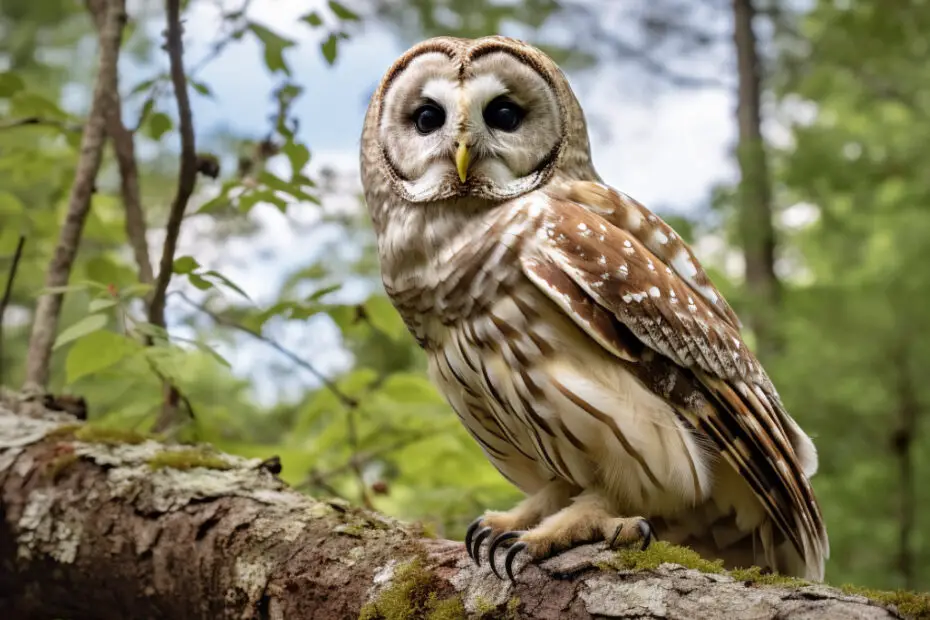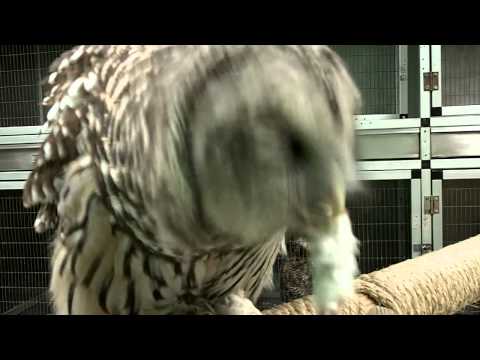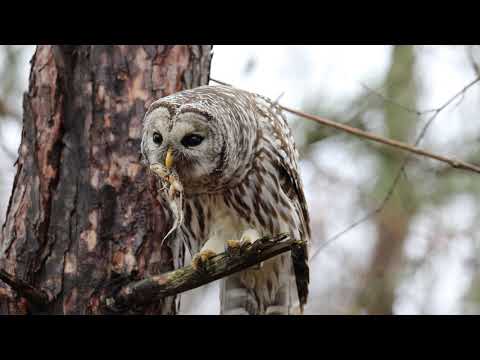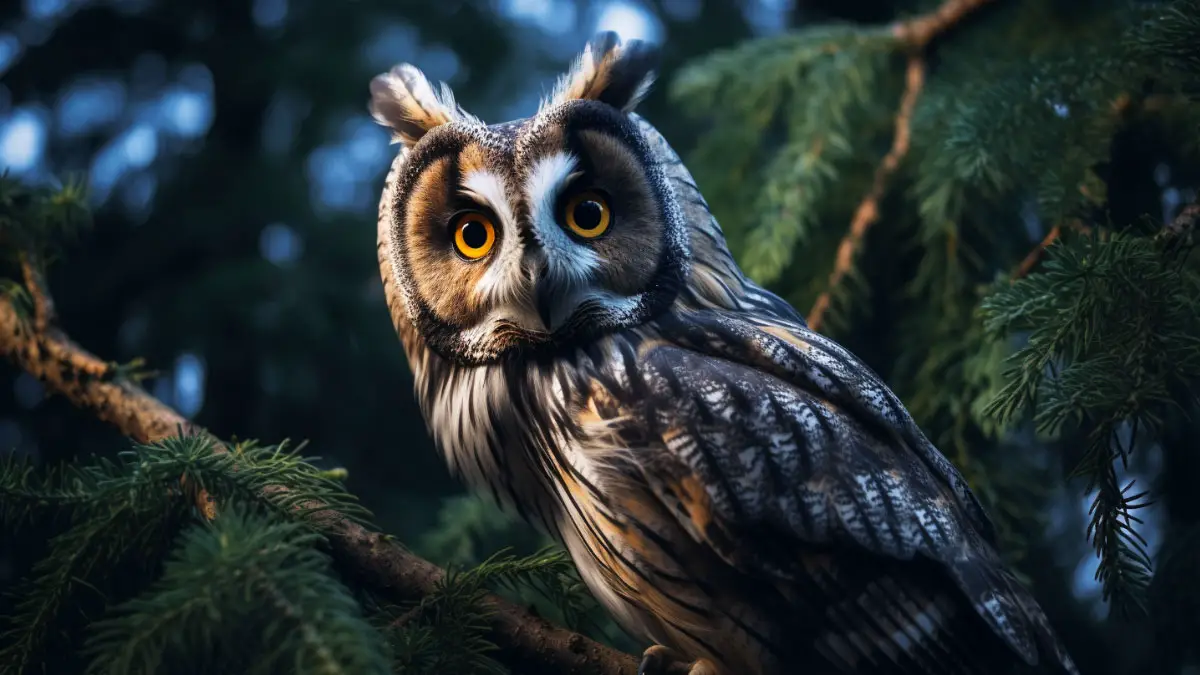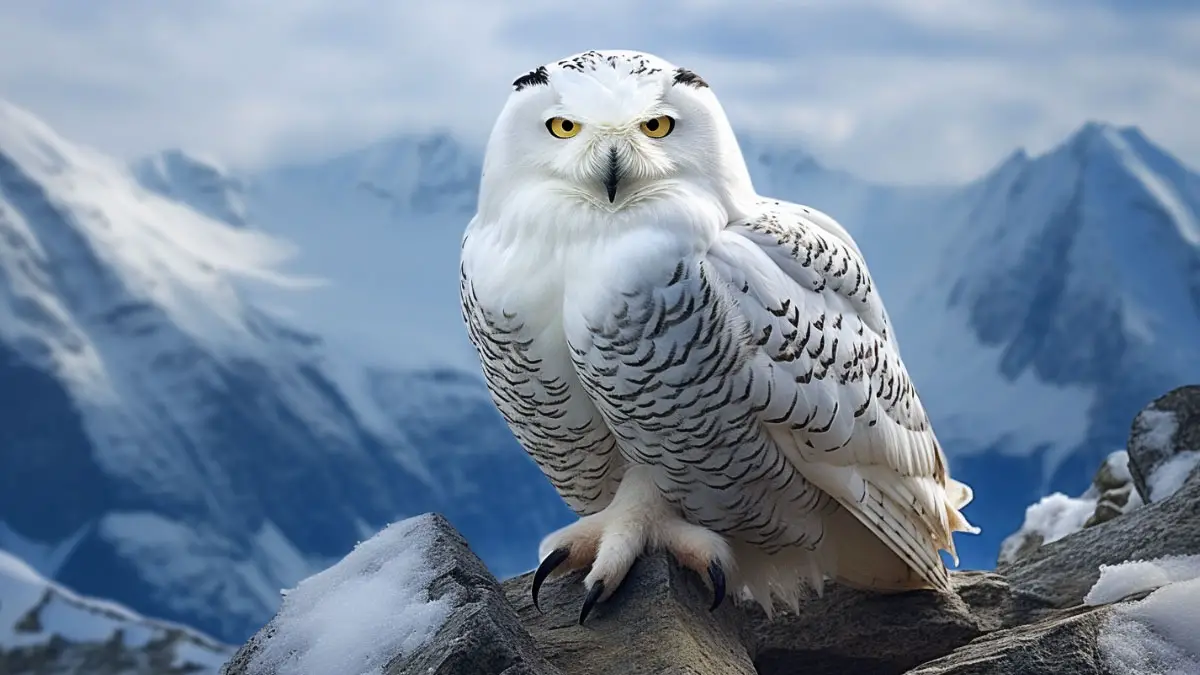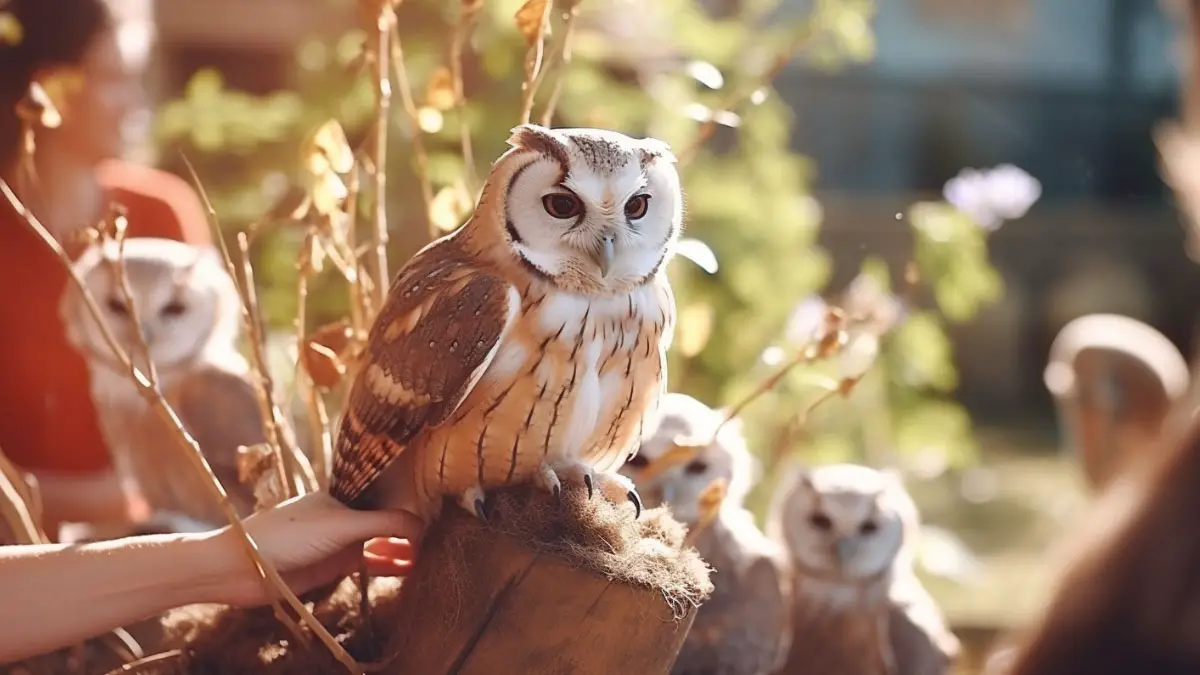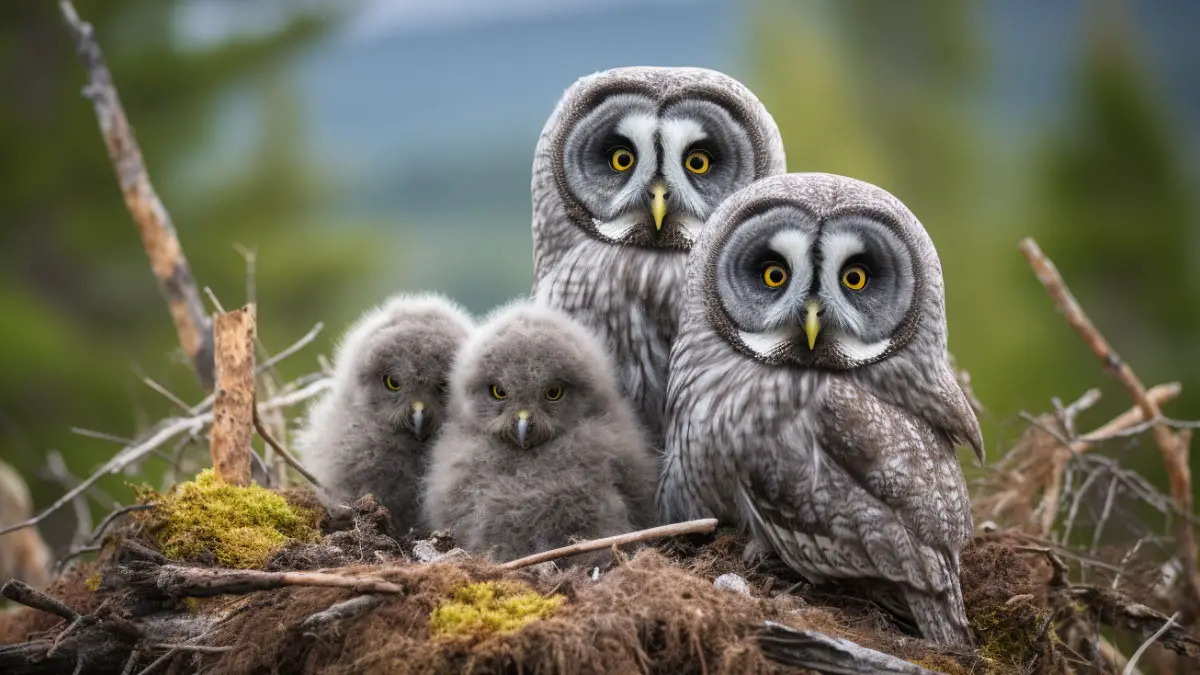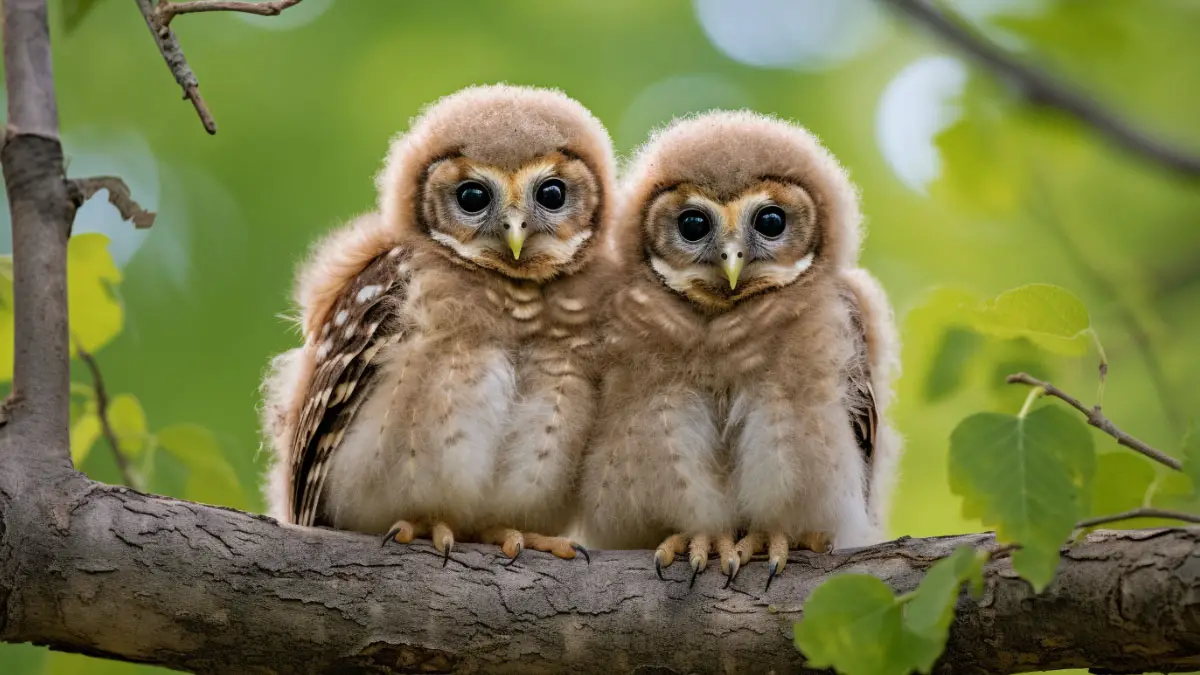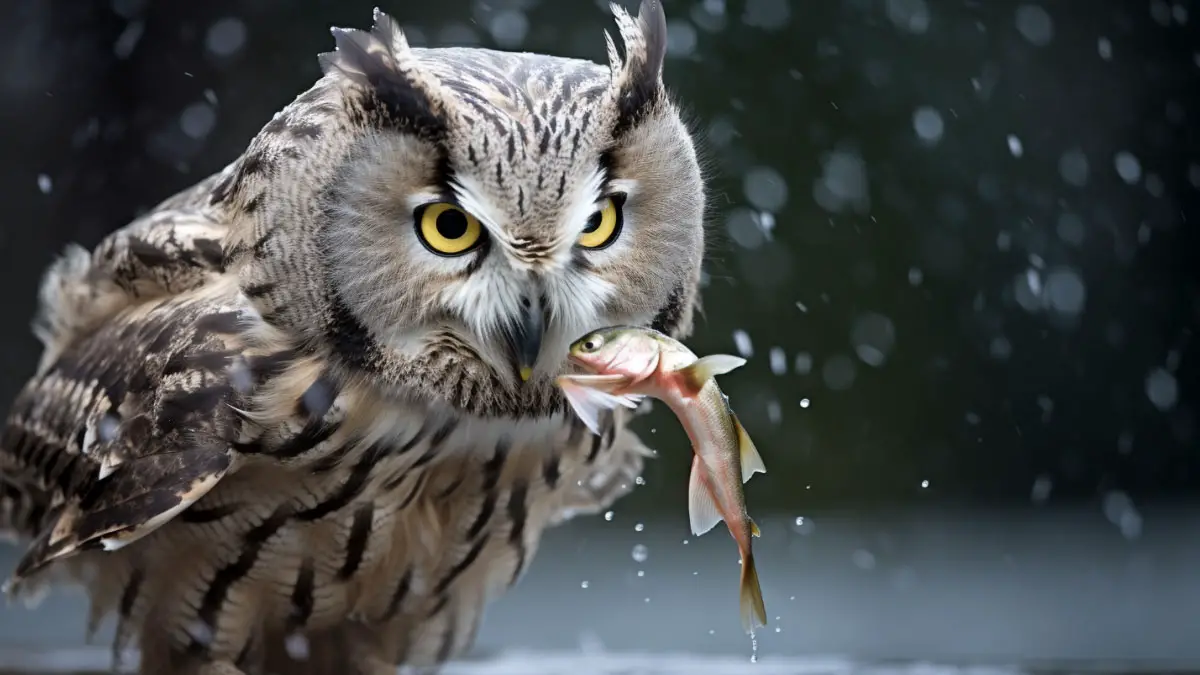Like other birds of prey, barred owls serve a great purpose in the ecosystem by keeping the number of prey animals moderate by eating. However, with over 2000 species of small mammals, including rodents, tree shrews, and eulipotyphla, one can’t help but wonder about what is in their diet.
So, what do barred owls eat? Barred owls eat various small mammals, including mice, voles, and rabbits. They also eat birds, including doves, songbirds, and jays. Those near a water source also hunt and eat fish, crustaceans, and amphibians, including frogs and salamanders.
The prey items mentioned above are just highlights of the various barred owls’ prey animals. Read on for a more detailed list, and learn the factors that influence what they eat.
What Do Barred Owls Eat: The Diet List
The barred owl, Strix Varia, also called the hoot owl, is a bird of the family Strigidae. They are present in more than one location in The United States and Canada, which usually suggests their diets vary.
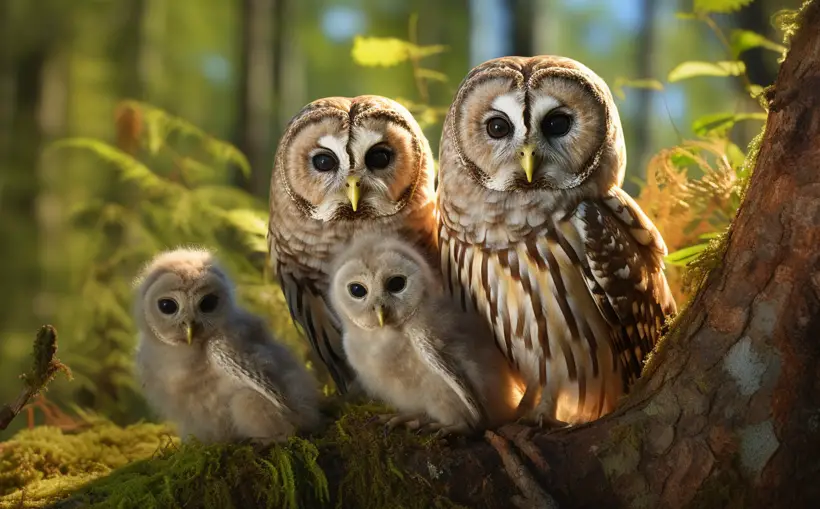
Also, due to the variety of potential prey species, it can be hard to tell what their preferred prey items are. However, further research can help you answer that.
Nevertheless, there are the common food items in their diet listed below;
1. Small Mammals
Small mammals are their all-time favorites, especially rodents since they’re small and easy to hunt. They are also available in plenty since they make up around 40 percent of all mammals in existence today.
The small mammals that are commonly preyed on by barred owls include;
- Mice
- Voles
- Bats
- Rabbits
- Squirrels
- Opossums
- Shrews
- Raccoons
- Hares
- Chipmunks
This video clearly shows a barred owl eating a mouse.
2. Birds
Barred owls also hunt various bird species, especially the smaller ones. However, they also hunt non-flying domesticated birds larger than them. The following list comprises the bird species they hunt;
- Songbird
- Doves
- Woodpeckers
- Grouse
- Jays
- Pigeons
- Crows
- Ducks
- Quail
- Chicken
- Pheasants
3. Fish and crustaceans
Various fish and crustacean species also make up the barred owl’s food lists, especially those that live near the water source. The following list features crustacean and fish types hunted by barred owls.
- Crayfish
- Crabs
- Freshwater fish like minnows and perch
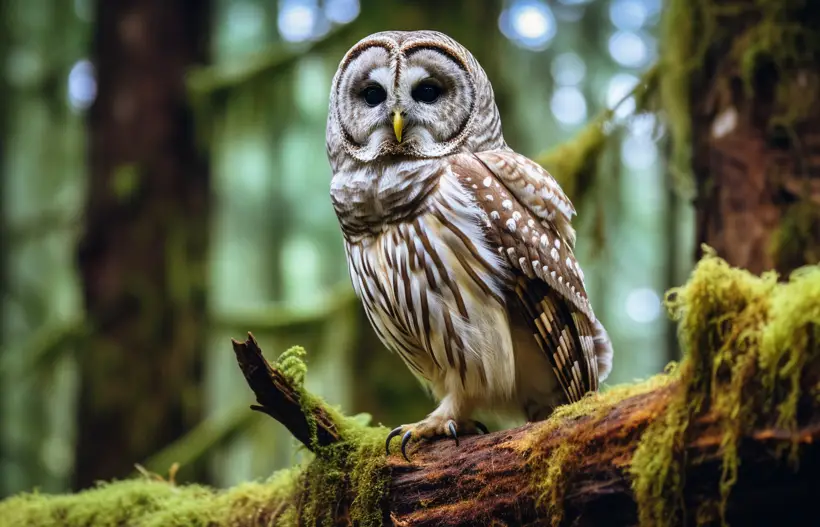
4. Reptiles
Occasionally, when the barred owls’ primary food options are scarce, they’ll hunt various reptiles, including;
- Snakes (garter, ribbon, and rat snakes)
- Lizards (Anoles and skinks)
5. Amphibians
Barred owls living near water bodies also hunt various amphibians found in their habitat. The list below features the various amphibians dined on by these raptors;
- Frogs (wood frogs and northern leopard frogs)
- Toads
- Salamanders
Here is a video of a barred owl eating a frog.
6. Invertebrates
Barred owls also occasionally feed on invertebrates due to food scarcity or just taking the opportunity of their availability. However, they also feed on them when raising nestlings to later regurgitate in the young’s beaks. The various invertebrates preyed on by the barred owls include;
- Large insects (crickets, beetles, grasshoppers)
- Spiders
- Earthworms
How Do Barred Owls Find Something to Eat?
To start with, barred owls are primarily nocturnal, finding food under the cover of the darkness. However, occasionally they’ll find food during the day, like when the prey is scarce, during the night, or when they have nestlings. They also hunt at dusk and dawn.
Barred owls are skilled hunters who use various hunting techniques, but the most used are perching and waiting. This hunting method involves perching at a high point, like a tree branch, where they have a great view of the surroundings.
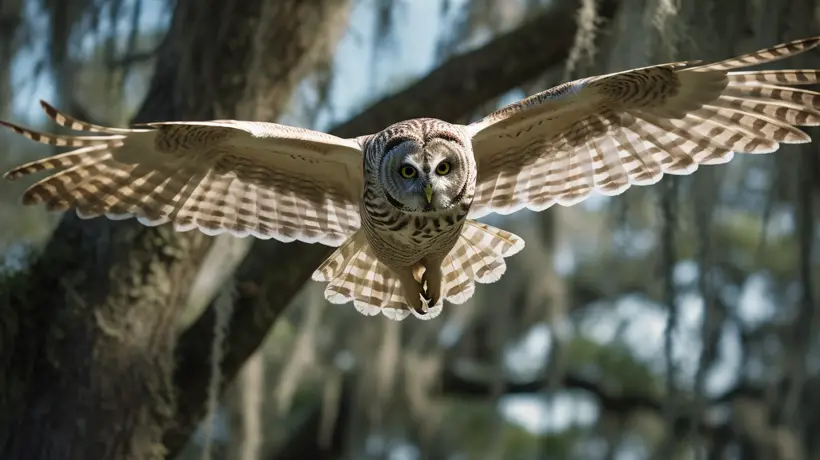
They use their eyes and ears to watch and listen to their surroundings for a potential prey animal. Once spotted, they may wait for it to come closer within the striking range. When the prey is within range, the barred owls swoop in with their talons extended and catch it.
Barred owls also hunt by flying low over the ground while scanning for prey in the surrounding areas. Sometimes they’ll also stand on the ground to pick and eat prey, especially crustaceans and invertebrates. The hunting technique varies with the type of prey they are hunting.
How Do Barred Owls Eat Their Prey?
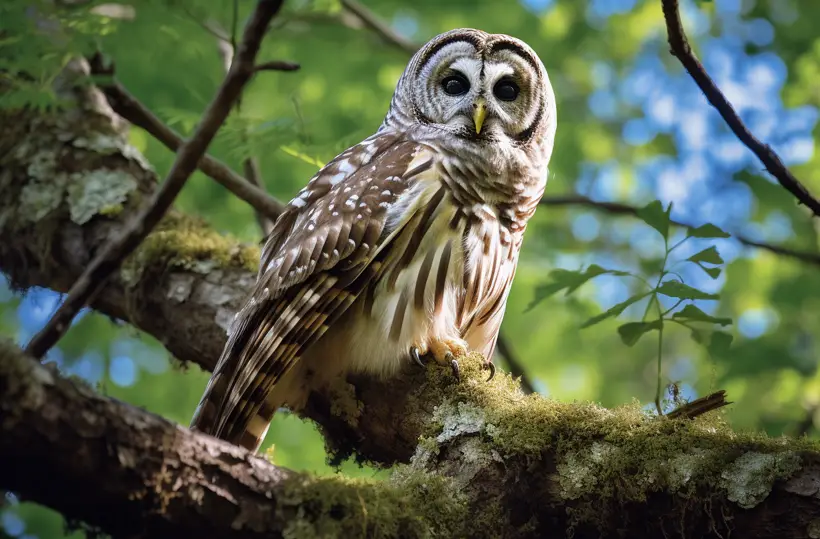
When a barred owl captures prey, it has a few options on how to eat it, including;
1. Swallowing The Prey Whole
One way that barred owls eat their prey is by swallowing them whole, head first. This method is common when eating smaller prey animals like rodents, amphibians, and crustaceans.
2. Cutting To Pieces
When dealing with larger prey animals, these birds of prey use their beaks to disassemble them into smaller pieces. They then swallow these pieces of the digestible organs and flesh and leave bones, feathers, and fur on the ground.
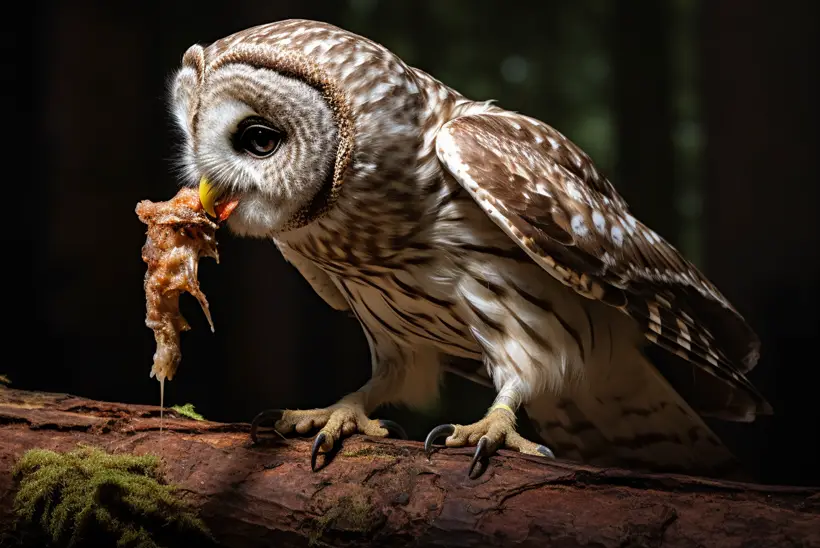
Barred owl’s digestive systems cannot digest everything they consume. Therefore, various things, including teeth, fur, and bones from the prey animal are regurgitated later as pellets. However, their systems extract as many nutrients as possible from each prey animal they consume.
Besides that, barred owls also keep some of their prey in a nest or safe place for some time.
Do Barred Owls Eat Their Prey’s Fur, Teeth, and Bones?
When a barred owl captures prey, one way that barred owls eat their prey is by swallowing them whole, head first. This method is common when eating smaller prey animals like rodents, amphibians, and crustaceans. In this case, they swallow all the parts, including fur, bones, and teeth
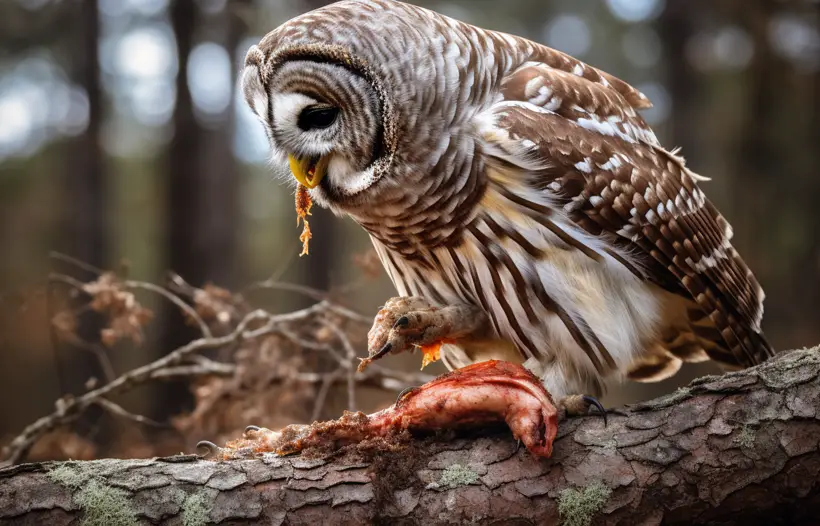
When dealing with larger prey animals, these birds of prey use their beaks to disassemble them into smaller pieces. They then swallow these pieces of the digestible organs and flesh and leave bones, feathers, and fur on the ground.
However, barred owl’s digestive systems cannot digest everything they consume. Therefore, teeth, fur, and bones from the prey animal are regurgitated later as pellets. But their systems extract as many nutrients as possible from each prey animal they consume.
What Do Barred Owls Eat During Winter?
Unlike most animals that hibernate during the winter, barred owls remain active throughout the time. Mainly, this is because most of their prey animals remain active throughout the time. The presence of food means they don’t need to migrate or change their diet.

Some of the animals that remain active throughout the winter include small mammals, like voles and mice. Also, some birds and invertebrates also remain active through winter. Since they are opportunistic, they usually capture any small animal they can find.
Since hunting is usually harder during winter, their senses, including their great hearing, help them. Their asymmetrical ear openings allow them to hear prey before seeing them in the winter. Barred owls also fly silently, which makes hunting through this time possible.
Factors That Influence What Barred Owls Eat
As stated earlier, barred owls’ diet is diverse. Not all prey animals are equally beneficial to them, which suggests that various factors influence their diet choice. The factors influencing their diet option include;
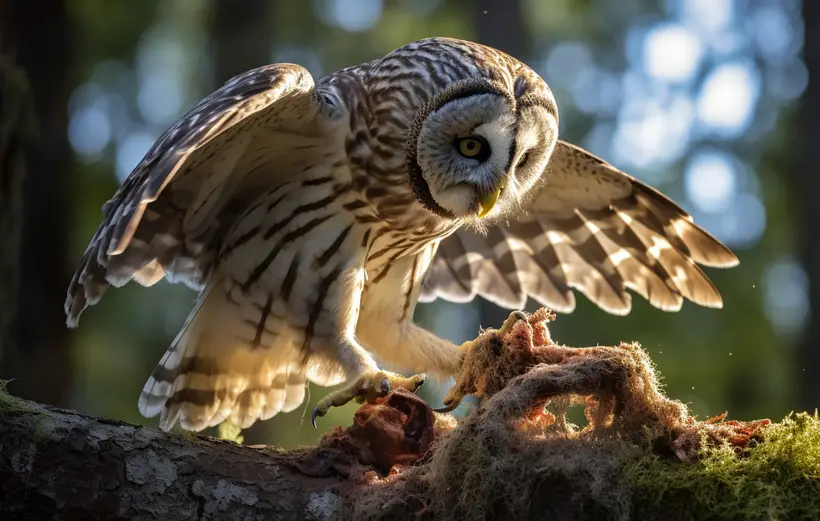
1. Geographical Location
Owls are distributed in various regions in The United States and Canada, where the type and availability of prey animals vary. Those in dense forests, like in Canada will come across more rodents than those in swampy areas.
2. Habitat
Barred owl’s habitat also influences what barred owls eat. Popularly, these birds inhabit woodlands with dense and mixed deciduous woods. However, some live in wooded swamps, while others prefer suburban neighborhoods.
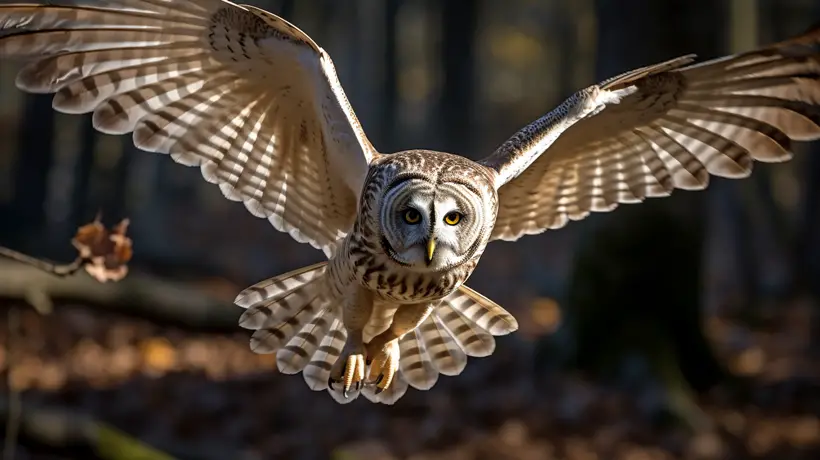
The diet for those in the woodlands is more mammals and birds, while those by the swamp dine mostly on amphibians. Barred owls in the neighborhoods will eat small mammals and occasionally game and captive birds.
3. Season
The season during which the owl hunts also determines the type of prey animals they catch and eat. During the spring season, there are usually more small mammals, while in summer, there are more amphibians. As opportunistic feeders, barred owls will consume more of the available animal.
4. Age
The barred owl’s age also determines what they eat. Young and juveniles, who are not yet used to hunting, will prey more on amphibians, reptiles, and invertebrates. Adults can eat varieties, including their favorites, small mammals and birds.
Related Questions
This section covers various questions frequently asked by learners about the barred owl’s diet. Read on to learn about them and get answers to some questions that you may have.
Captive barred owls can eat small rodents, birds, and invertebrates if you’re able to catch them. However, since they’re hard and expensive to get or hunt, you can give them available meat, like poultry and beef.
Barred baby owls feed on regurgitated food from their mother’s crop when they’re nestlings. However, as they grow they eat various types of insects, crustaceans, and amphibians.
Once in a while, barred owls feast on carcasses, especially from roadkill. This behavior is common for barred owls living near an urban center.
Outro
Barred owls eat various small mammals, including mice, raccoons, and chipmunks. They also hunt birds like songbirds and jays and some game birds like quail and grouse. Their food list also includes the various reptiles, amphibians, and invertebrates, including insects.
The type of prey animal they eat varies based on various factors, including their geographical location and habitat. Barred owls near a water source may eat more amphibians and fish than those in dense woodlands. Also, season changes and age determine the type of prey they hunt and eat.
